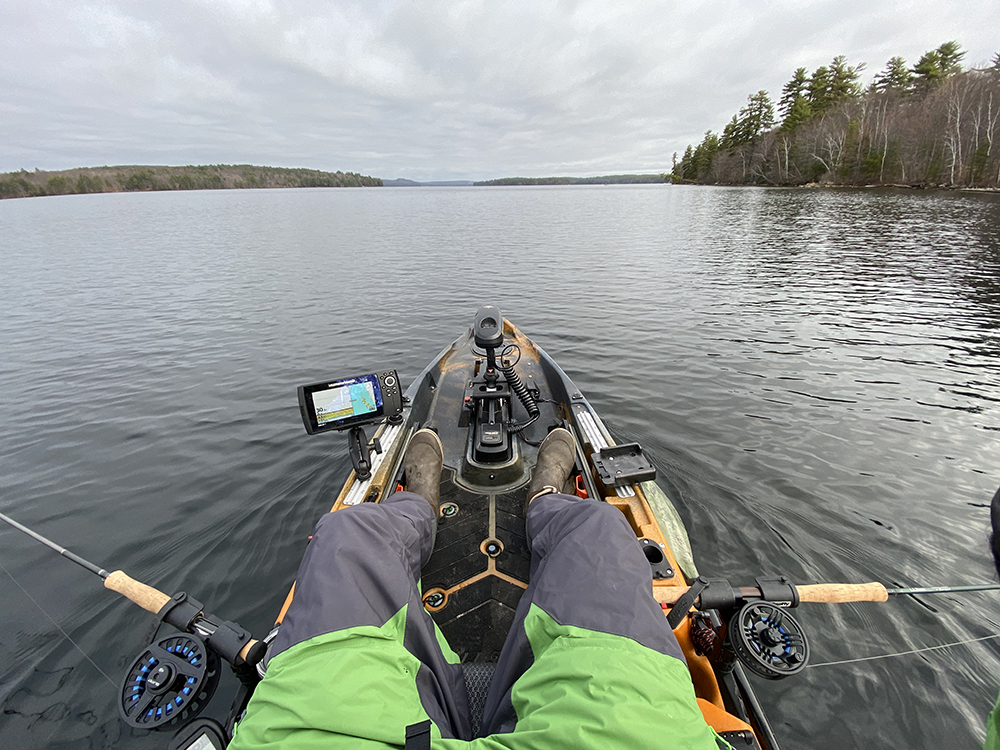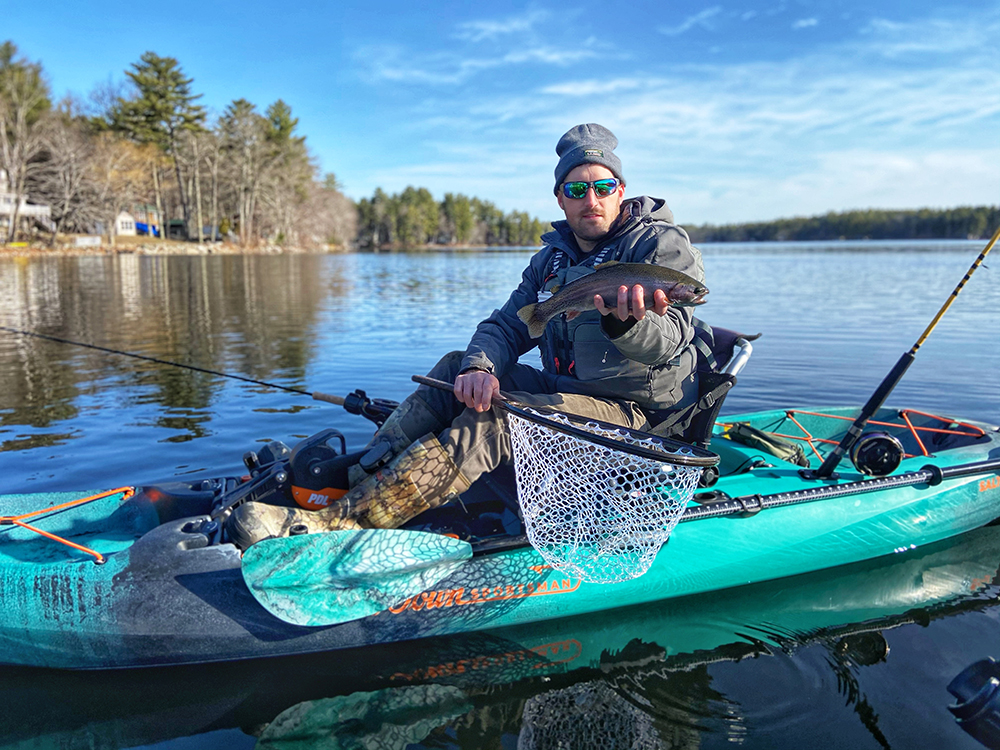Ice-Out Trolling for Salmon and Trout
By: Christi Holmes, Ambassador
Trolling may conjure images of large boats laden with gear and electronics, fishing deep waters on big lakes. But in April, when frozen lakes open, landlocked Atlantic salmon and trout can be targeted near the water's surface. Baitfish, like rainbow smelt, gather to spawn and make runs up tributary streams, triggering salmon and trout to feed aggressively.
Trolling from a canoe or kayak on ponds of all sizes commonly results in the best fishing days of the year.
**Always wear the appropriate cold water immersion gear and life jacket when fishing in cold water. Learn more about Cold Water Kayak Fishing Safety.**

TROLLING GEAR AND SET UP
You can't beat the hands-free benefits of a craft like the pedal-driven Sportsman Salty PDL 120. It's very fast and turns on a dime. Explore tight, shallow coves with ease, and speed back to the launch at the end of the day no matter how rough the chop. I troll for hours and never get tired from pedaling.
Trolling is where the Sportsman Autopilot shines. Thanks to the i-Pilot GPS trolling motor, you can set your speed on cruise control, sit back and steer with the foot pedals. With the ability to monitor and adjust your speed, you can try new speeds with confidence and discover what works. If you troll the same body of water frequently, use iTracks to track and store your route, then simply set your motor to retrace the saved route.
Here in Maine, the traditional trolling method is to troll a fly rod with sinking fly line and a tandem streamer. I usually fish with one fly rod and one rod outfitted with lead core line. I run 20-30' of fluorocarbon leader, with a swivel where it connects to the line.
Rod holders are key while trolling so you can fish more than one line. The built-in rod holders will work, but I prefer to mount a rod holder on each rail in front of me so that my rods are pointing perpendicular to my kayak and I can keep an eye on the rod tips.
Though downriggers are almost a must for trolling in summer when thermoclines develop and cold, oxygen-rich water gets buried under 20-30' of warm water, they're not necessary in the spring after ice-out when trout and salmon are closer to the surface.
A fish finder is extremely helpful while trolling, not so much to mark fish but to monitor your speed and depth. If I'm about to go over a shallow hump that my gear will get tangled in, I want to know so I can quickly reel in some line. If I want to hold a specific depth while trolling or explore different depths, electronics help me do that. I also watch for schools of baitfish. Find the bait find the fish!

TROLLING TECHNIQUE
Trolling speed is critical. Put your lure, fly, or bait in the water next to you and watch how it moves and adjust your speed accordingly.
Artificial lures like orange, red, or gold DB smelts, Mooselook Wobblers, and streamer flies like a grey ghost work well for both trout and salmon. It's hard to beat the real thing, so try trolling live or dead bait where it's legal. For live bait, I like to use a smelt or small shiner with a pre-made sliding bait rig. For dead bait, I like to sew on a smelt.
When targeting trout, I stay really close to shore, anywhere between 8 to 25 feet of water, and keep my speed between 1-2mph. I usually have 20-30 yards of line out. Look for structure on your fish finder and when you find a rock pile or underwater vegetation, try passing over it a couple times before moving on.
For salmon, I will focus on deeper water with my lure 10-15' below the surface and troll 2-3mph, as long as the lure still performs correctly. Troll near the mouths of tributaries, where smelts travel to spawn.
A technique that works for both fish includes holding a rod and slowly moving the tip forward and back, adding more action to your lure. Fishing two rods at different depths with different lures will help you hone in on what the fish want. Don't be afraid to switch up your lures and check your lures often to make sure you're not dragging vegetation.
Ice-out is a sure sign of spring, but beware of icy water temperatures and always wear your life jacket and drysuit. Be wary of other boaters, too, who usually don't notice you're trolling with 100' of line behind you.
Trolling is relaxing, allows you to fish two rods at the same time, and is an efficient method to scout out a large area in a short amount of time.






